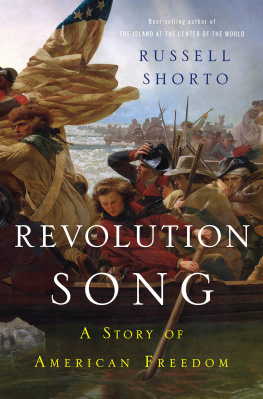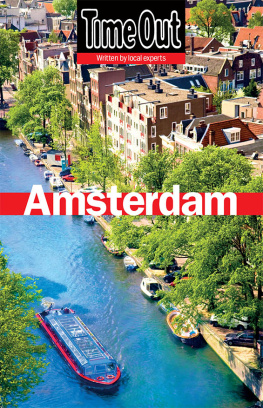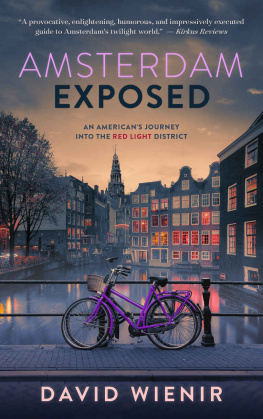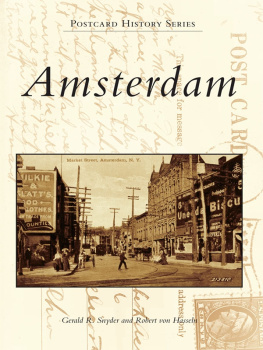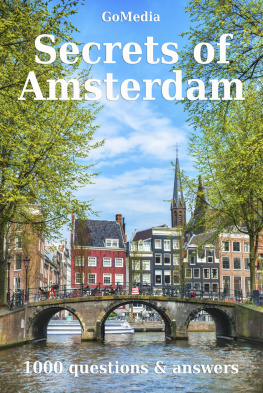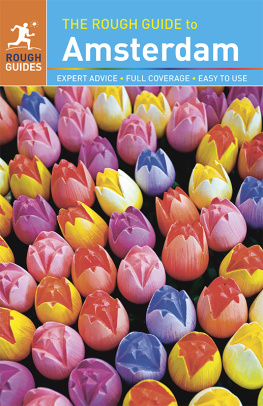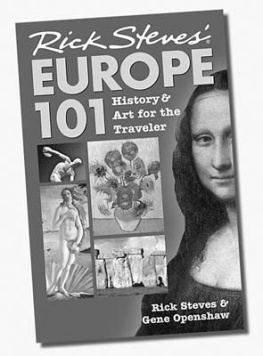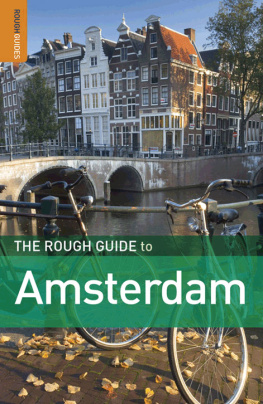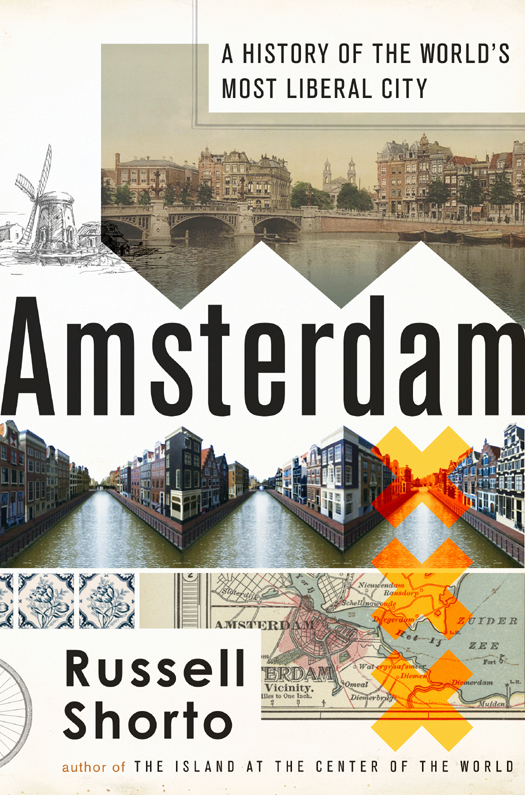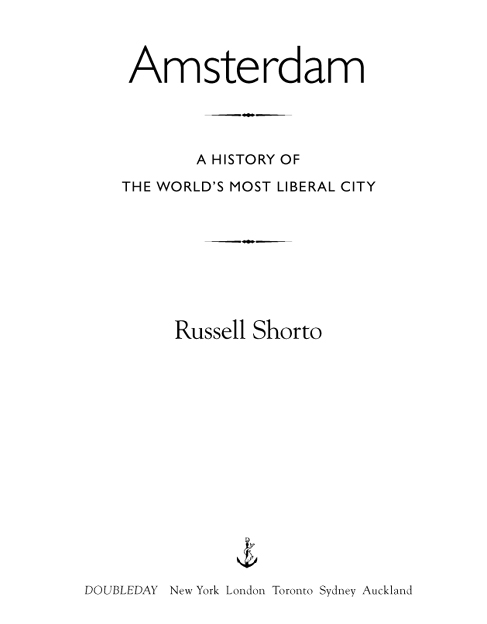Copyright 2013 by Russell Shorto
All rights reserved. Published in the United States by Doubleday, a division of Random House, LLC, New York, and in Canada by Random House of Canada Limited, Toronto, Penguin Random House Companies.
www.doubleday.com
DOUBLEDAY and the portrayal of an anchor with a dolphin are registered trademarks of Random House, LLC.
Jacket design by Michael J. Windsor
Front of jacket: middle painting Patrick Hughes/Art agency Vieleers; tiles Christopher Elwell/Shutterstock; windmill Canicula/Shutterstock; map Encyclopaedia Britannica/UIG/Universal Images Group/Getty Images; top image of Blue bridge and the Amstel River photomechanical courtesy of the Library of Congress Prints and Photographs Division
Back of jacket: tulips melis Shutterstock; Rembrandt Rijksmuseum, Amsterdam; bike Hein Nouwens/Shutterstock; John Lennon and Yoko Ono courtesy of the National Archief
Library of Congress Cataloging-in-Publication Data
Shorto, Russell.
Amsterdam : a history of the worlds most liberal city / Russell Shorto.
First Edition.
pages cm
Includes bibliographical references.
1. Amsterdam (Netherlands)History. 2. LiberalismNetherlandsAmsterdamHistory. I. Title.
DJ411.A55S56 2013
949.2352dc23 2013003544
eBook ISBN: 978-0-385-53458-1
v3.1
For
Pamela, Anna, Eva, Anthony, Reinier, Hector, and Benjamin
Contents
CHAPTER
A BICYCLE TRIP
A day in Amsterdam begins with me leaving my apartment with my toddler son in my arms, strapping him into his seat between the handlebars of my bicycle, working his blocky little sneakered feet into the footpads, then setting off through the quiet, generally breezy streets of our neighborhood, which is called Oud Zuid: Old South. You could look at the work of any Dutch master for an idea of the morning light we cycle through. There is a white cleanness to it, a rinsed quality. Its a sober light, without, for example, any of the orange particulate glow you get from the Mediterranean sun. The houses of the neighborhood are three- or four-story brick buildings, all constructed in the first two decades of the twentieth century, when what was then a vigorously working-class city, one that still smelled of herring and roasting coffee beans, expanded rapidly around its central core of canals.
We cycle past street-level apartments, some of which, following a Dutch tradition that I like to think has to do with an ingrained commitment to openness, feature a central uncurtained window that puts the living room on public display, as if the family who lives there thinks its life is worthy of a museum. For a while I didnt understand why, when we reach the part of the route that has us riding alongside a canal, my son would break out in a series of high screeches. Then I realized Anthony was imitating the gulls that squeal as they do their crazy arcs and dives above the water.
We pass a few businesses. The bakery is usually scenting the morning air with cinnamon as we ride by. The display windows of the corner bicycle shop exhibit sturdy, gleaming new models, lately in an array of pastel tones, by Gazelle and Batavus, factories that have been turning out Dutch bicycles for a century. An open door to the right of the windows leads down to the basement, and the repair shop, whose interior I know too well. The grooves in the concrete at both sides of the stairway leading below are meant for bicycle tires.
Once in a while I will vary the route and turn down along the Hobbemakade, where on our right is a slightly forlorn-looking stretch of canal, with weeds growing up through the quayside where rickety houseboats are moored, and on the left are the remnants of one of the smallest and least noticeable of the citys several red light districts. De WallenAmsterdams central red light districtis a sort of alternate-universe Disneyland, noisy and with a certain ragged cheer, visited not only by drunken male tourists but also by couples strolling arm in arm and even families. Here, by contrast, there are only three or four of the display windows that the citys licensed prostitutes sit in to exhibit themselves, in the midst of what is otherwise a residential street. I never get how customers would know to find them. Nevertheless, even in the morning there is often at least one woman on duty, wearing a swimsuit, sitting on a stool, smoking, or listlessly punching the keys of a cell phone. Sometimes she will wave at Anthony and give him a little smile. The other window might be empty save for a stool with a towel folded on the seat that is crumpled in a way that looks like it has been sat on. Such detailsthe crumpled towel, the bored look of the woman facing a long day of staring into the street, punctuated by short intervals of sex with strangersbring the citys infamous tolerance of vice out of the realms of sensationalism and idealism and into the realm of the deeply mundane. As with any other place, living here for a time causes the exotic to collapse under the weight of ordinariness. Two doors down is another storefront business, an advertising agency whose nameStrangeloveyou might think is intended as a wry commentary on the neighbors, but I would bet not. Ill bet they dont even notice.
Amsterdam School is the name given to the style of architecture that was pioneered in my neighborhood as it was coming into being. The style has a formal aesthetic, which has its technical descriptors and philosophical (socialist) underpinnings, but to me it simply embodies a reasonably pleasant combination of whimsy and stolidness. Brick (what could be more stolid?) is the medium, yet there is an infinity of playful variations: rounded turretlike corners, embedded deco-ish sculptures that seem to mock the hardness of the material (a girl surrounded by rabbits, a baby holding up a doorway), block-long apartment buildings that could have had an ocean liner as their inspiration, or a wedding cake.
The neighborhood is no more than five minutes by bike from the canal belt and the storied seventeenth-century heart of Amsterdam, but when developers were laying it out a hundred years ago they must have felt a need to connect the new area to the citys history. If Rembrandt visited the immediate area around my home he might feel some familiarity, for even though this was swamp and fields in his time the streets bear the names of many of the artists whom he groomed in his workshop or competed with for commissions: Frans van Mieris, who wrought exquisite small portraits of the wealthy class; Nicolaas Maes, who often painted ordinary people at prayer and at meals and gave the same loving attention to a glistening loaf of bread or an earthen pitcher on a table as he did to the faces of his subjects; Philips Wouwerman, who specialized in hunting scenes and was known to paint a mean horse.
At the time my neighborhood came into being, all of those were figures of the grand past, so that the names Nicolaas Maesstraat and Frans van Mierisstraat instantly gave the new neighborhood some of the luster of Amsterdams age of glory, when it wasbriefly and improbablythe greatest city in the world. To this day the houses on those streets have dignified presence. But as you go farther away from the center, as we do on our morning trip, the houses get plainer. It seems the city fathers of a century ago did not want to dilute the grandeur of the golden age by spreading its names too far. On the other hand, in 1905, right at the time that the more distant part of the neighborhood was being laid out, the nearby Stedelijk Museum, the citys modern art museum, mounted the first exhibition in the country devoted to Vincent van Gogh. The Dutch artist had died only fifteen years before; his home country had done its best to ignore him, but it was now obvious that they would have to pay attention. Yet at the same time, his name didnt carry bourgeois heftand who knew if those thick swirls of bright color would withstand the test of time? As a result of what I imagine were considerations such as these, Vincent van Goghstraatthe only street in the area whose name is instantly, globally recognizable todayis among the humblest: a single block of monotone dwellings.


